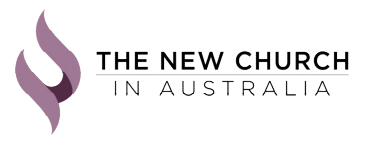1 Thessalonians
by Rev. Ian Arnold
If it is possible for you to do so look up a map of New Testament times (back of your Bible?) and find Thessalonica, well north of Athens and in Macedonia. (You might well spend 5 or 10 minutes with that map, looking – also – for Corinth, near Athens, and Philippi a little bit further east from Thessalonica. Across, in Asia Minor, is Ephesus. It is worthwhile doing this because it helps with your picture of Paul’s work and missionary activity.)
Whether you are able to do this, or not, now turn to the Book of Acts and to Chapter 17, the verses 1 to 10.This is part of the re-telling of Paul’s second Missionary journey. We read there of his arrival, with Timothy and Silas, in Thessalonica, of his preaching and teaching there, of rabble rousing in opposition to them, and of Paul and Silas being spirited away “by night to Berea” (see Verse 10). All of this, by the way, was on top of their ill-treatment in Philippi where they were imprisoned and beaten. (See Acts Chapter 16).
Fleeing to Beroea, just east from Thessalonica, Paul arrived there discouraged and downcast at his seeming failure to make any impression at these last two places – Philippi and Thessalonica – he had visited. And even in Beroea Jews from Thessalonica stirred up the crowd against him and, while leaving Timothy and Silvanus (Silas) behind, he went on, alone, to Athens.
From Athens, and anxious about the state of things back in Thessalonica, Paul commissioned Timothy to go and check to what extent the stirred up opposition had been effective and whether the Church had weakened or faded because of it. (See 1 Thessalonians 3: verses 1 to 5)
To Paul’s considerable surprise Timothy reported that the Church in Thessalonica was in good shape, standing up to opposition and its members full of enthusiasm (See Chapter 3, verses 6 & 7).. Receiving this report, and in a good frame of mind, Paul wrote this, his first epistle to the Thessalonians, congratulating them on their steadfastness but also taking up with them two issues, in particular, that Timothy had obviously brought to his (Paul’s) attention. One was to do with ethics, in particular sexual relations, and the other was to do with the expected and assumed to be imminent – return of Christ. With respect to the latter, people had been wondering whether members who had died would be at a disadvantage when that event took place.
And so what has become his highlight statement on this subject, Chapter 4, the Verses 13 to 18, particularly Verse 17, “Then we who are alive and remain shall be caught up with them, (those who have fallen asleep) in the clouds to meet the Lord in the air. And thus we shall always be with the Lord.”
It is one of the great and best known statements from the Writings for the New Church that “All religion relates to life and the life of religion is to do good.” (See “Doctrine of Life”, paragraph 1). And in this first epistle to the Thessalonians, and what is possibly the oldest of all that Paul wrote that has come down to us (indeed, of all New Testament literature that has come down to us), you can see him striving to make this point. Our Christian convictions and faith can’t but have an impact on our daily lives. God is holy and He desires us to be holy, too. This applies even when it comes to our most private and intimate lives and has implications requiring us “to lead a quiet life, to mind our own business and to work with our own hands” (Chapter 4, Verse 11).
You can never say that Paul didn’t insist on our need to live out our faith and Christian convictions.
